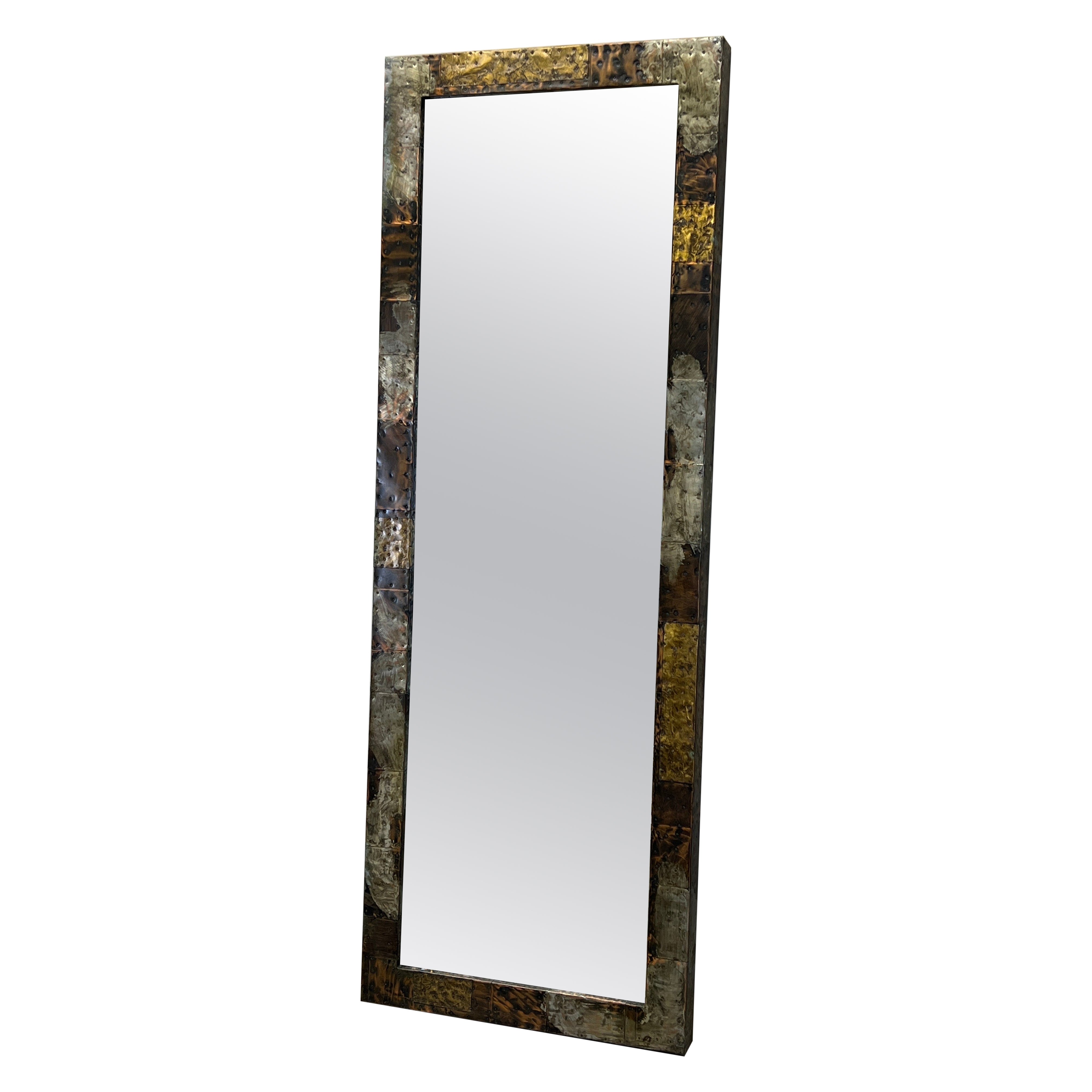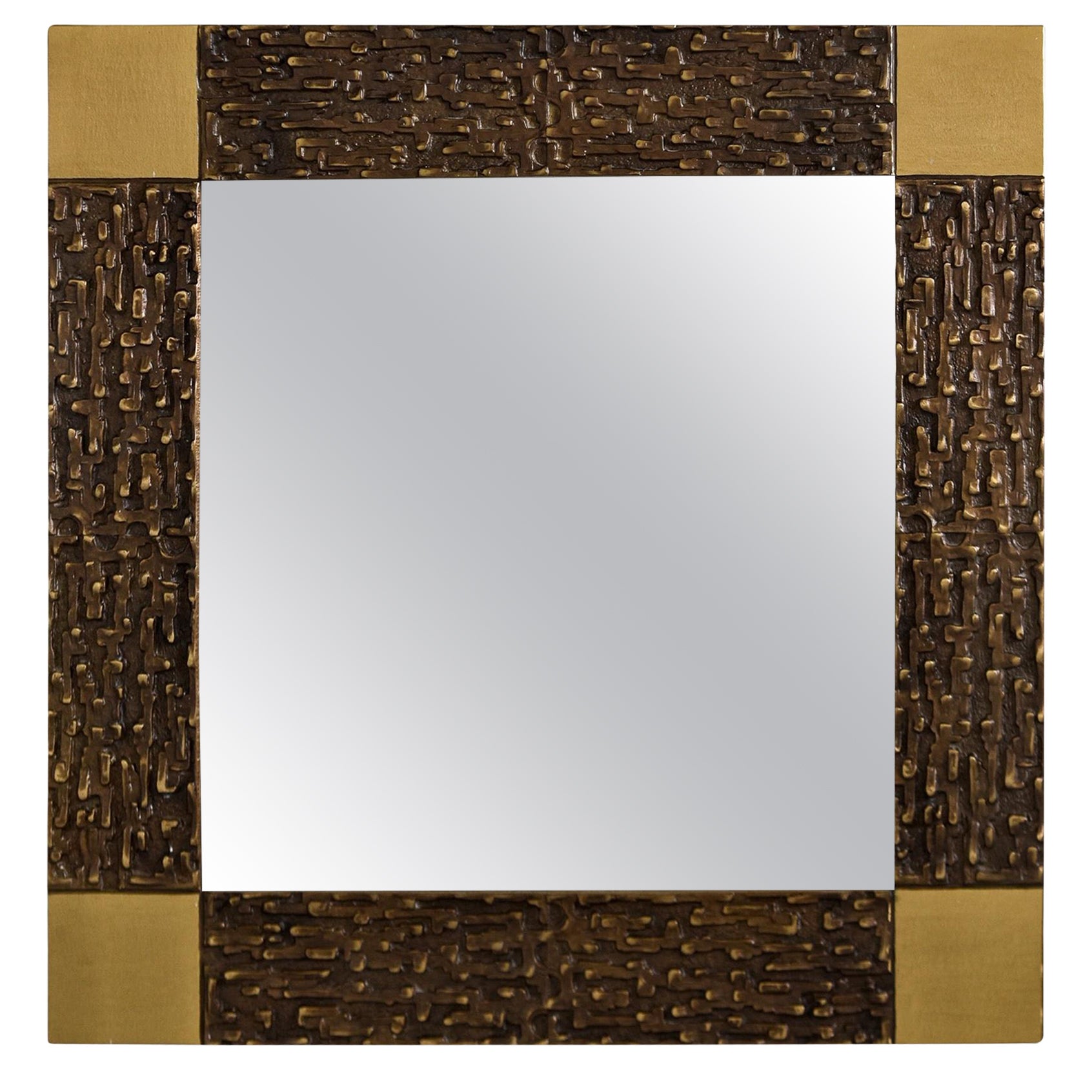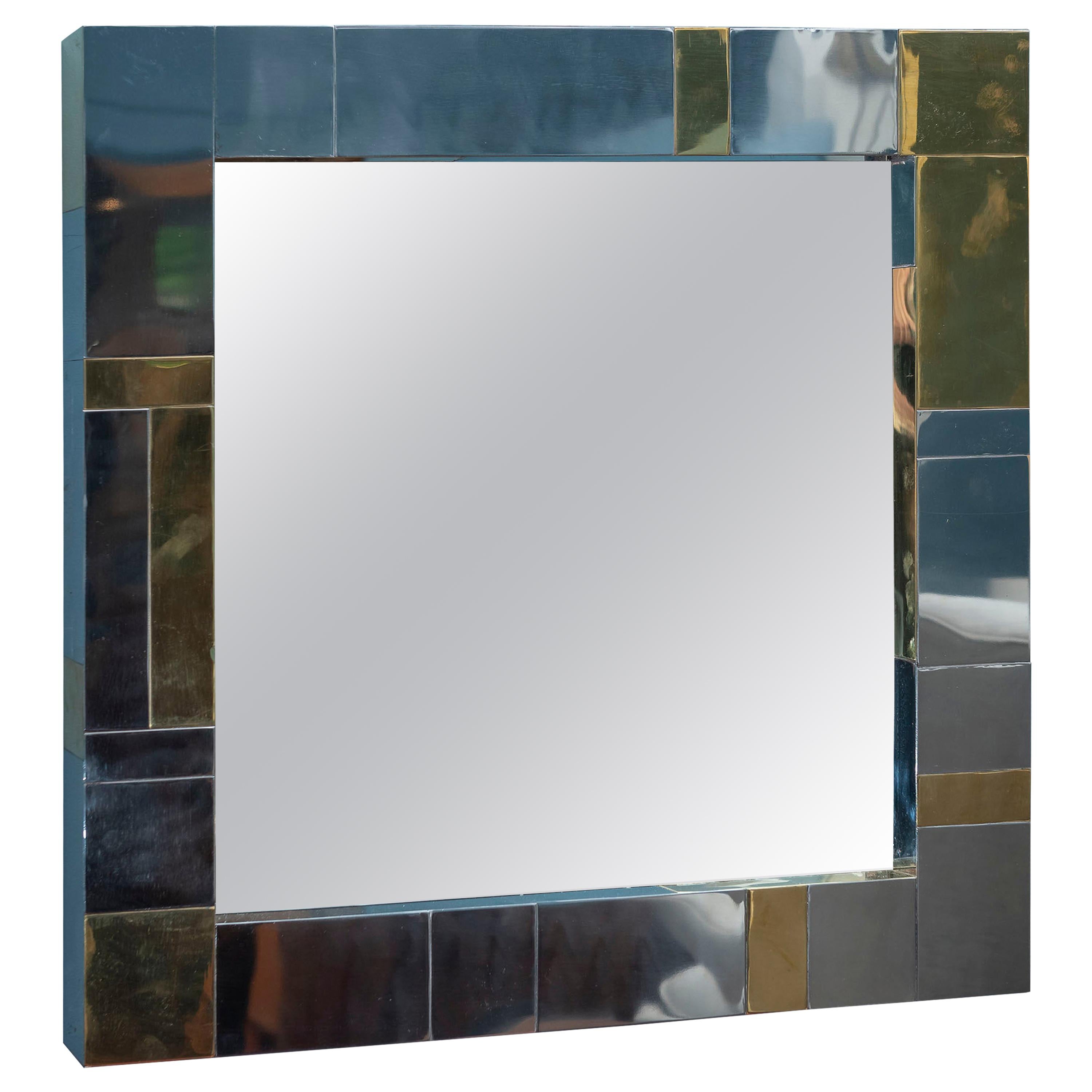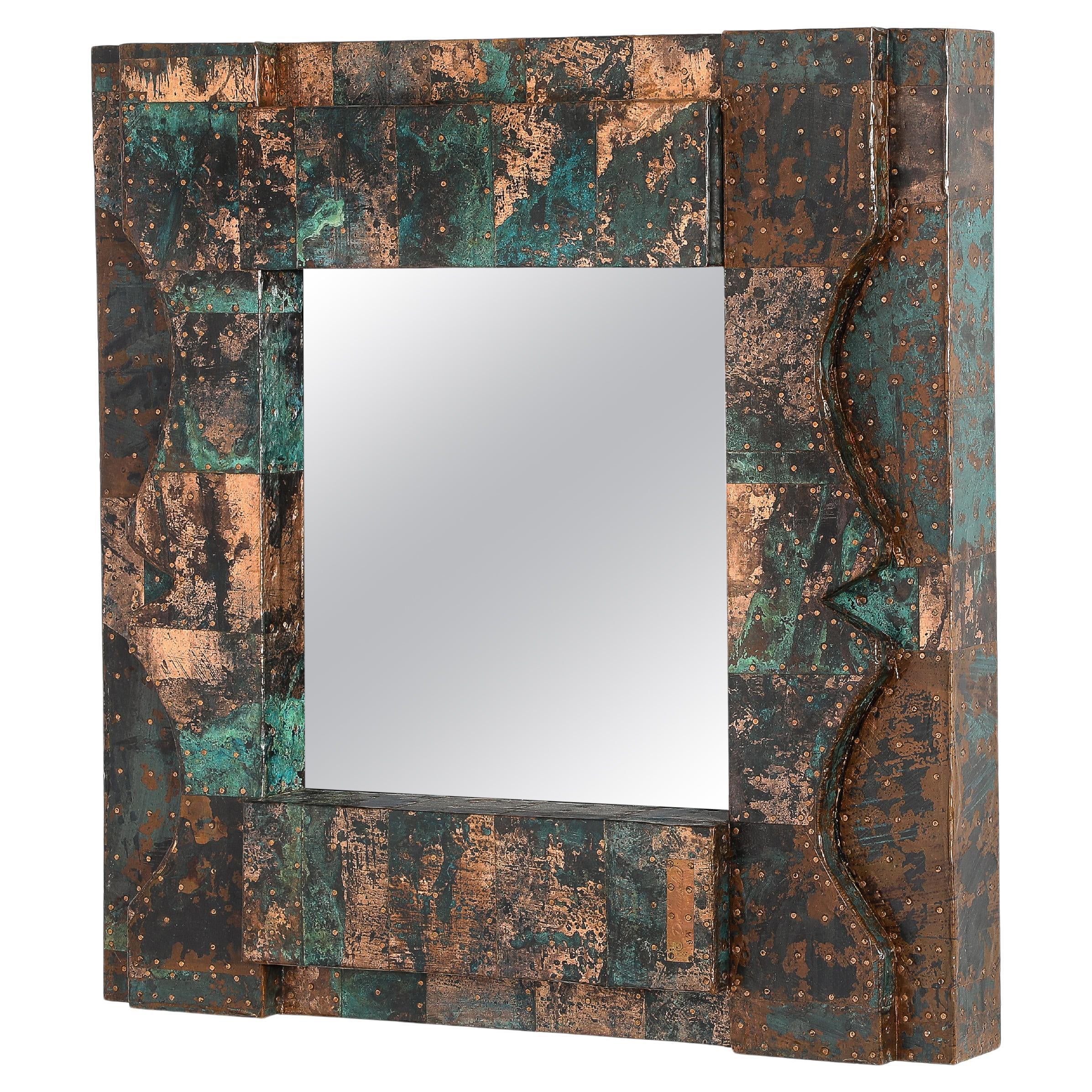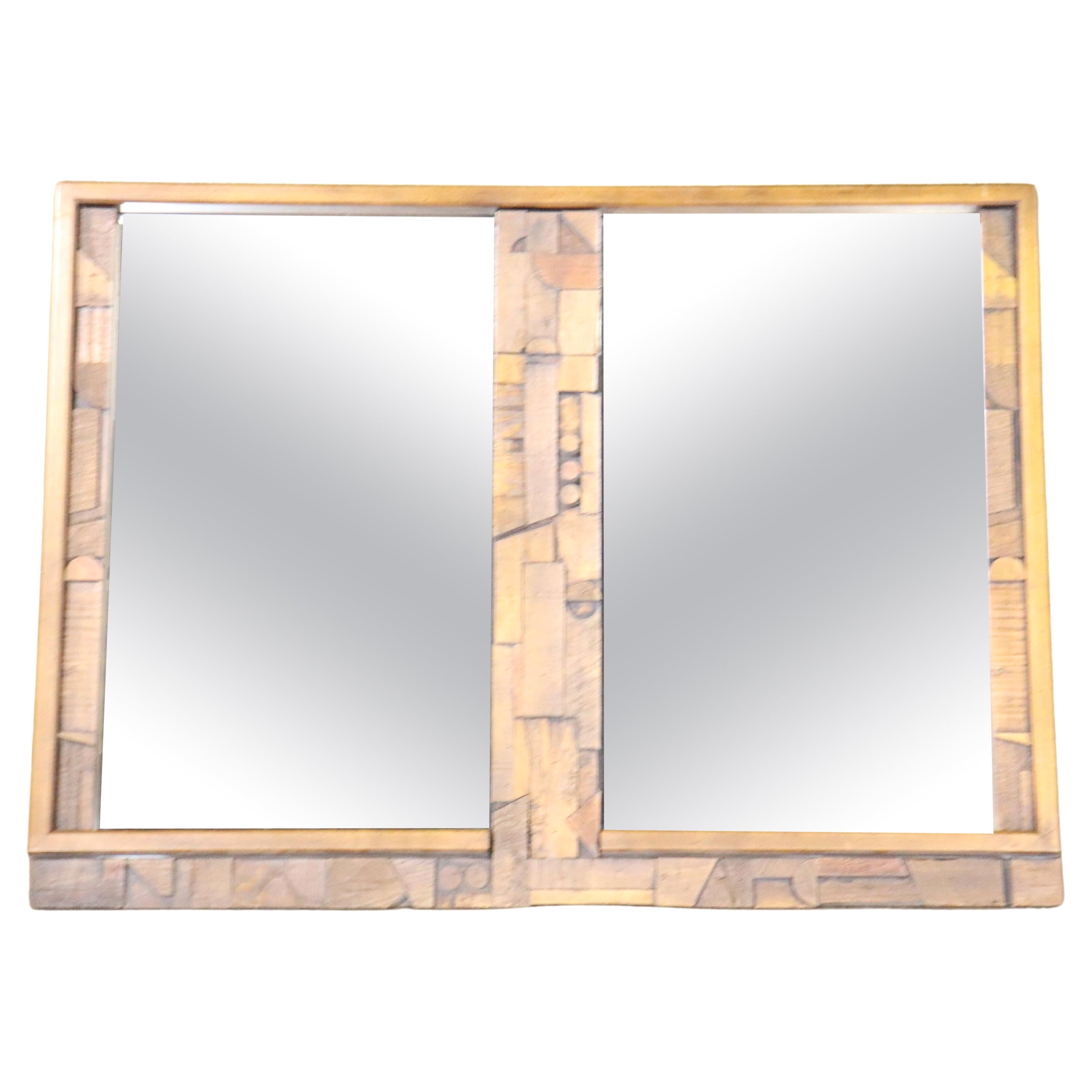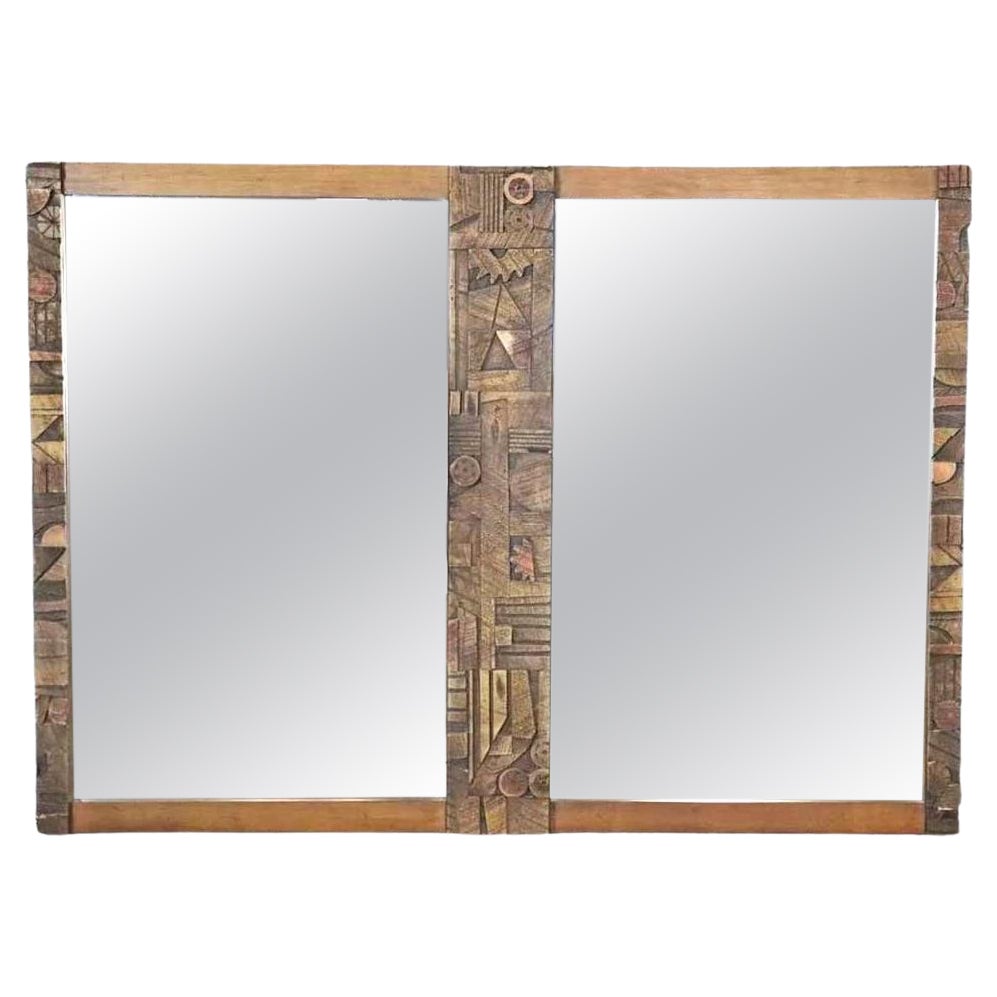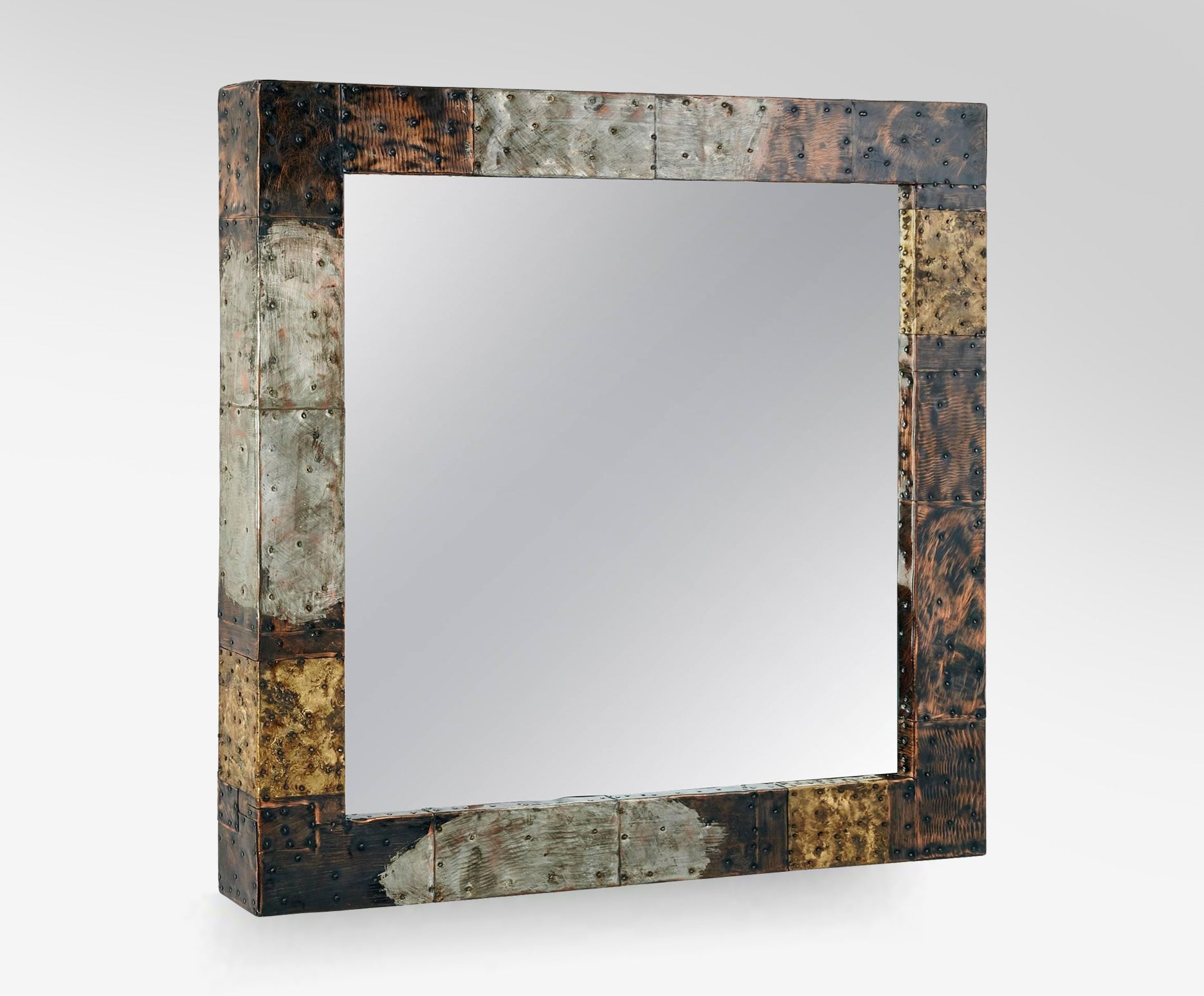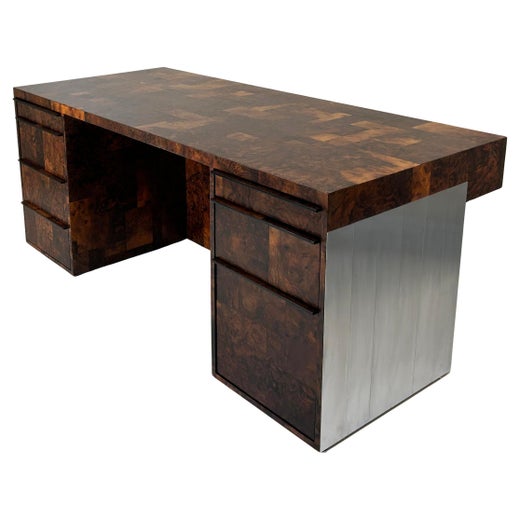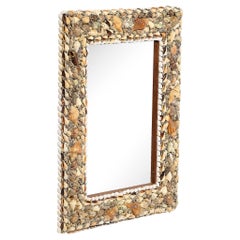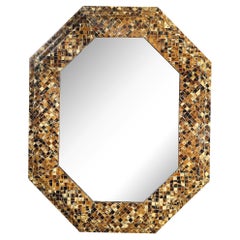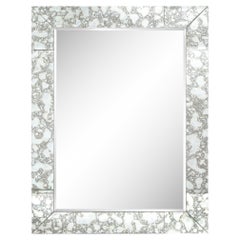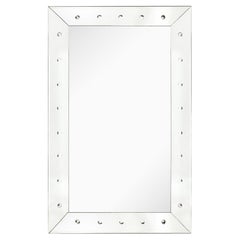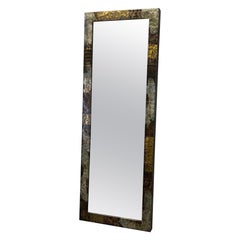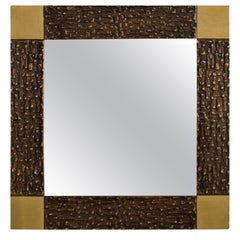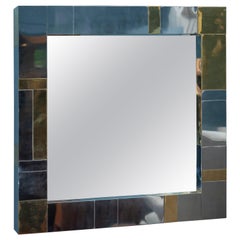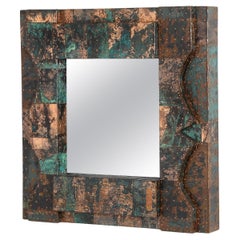Mid-Century Brutalist Patchwork Mirror by Paul Evans
About the Item
- Creator:Paul Evans (Maker)
- Design:
- Dimensions:Height: 30 in (76.2 cm)Width: 30 in (76.2 cm)Depth: 3.25 in (8.26 cm)
- Style:Mid-Century Modern (Of the Period)
- Materials and Techniques:
- Place of Origin:
- Period:
- Date of Manufacture:circa 1970
- Condition:Wear consistent with age and use.
- Seller Location:New York, NY
- Reference Number:1stDibs: LU793436715222
Patchwork Mirror
Combining brass, copper and pewter so that it takes the form of an irregularly welded collage may not seem like a sophisticated technique, yet it yielded a striking outcome in the Patchwork mirror designed by New Jersey-born Paul Evans (1931–87). The revered furniture maker, sculptor and master of the American Studio Craft movement designed this mirror as part of his 1960s-era Patchwork series for North Carolina manufacturer Directional Furniture.
Evans’s Patchwork mirror is indicative of an evolution of his experimentation in silversmithing and sculpture since his days as a student at the Cranbrook Academy of Art and elsewhere. The emphasis on handicraft was also part of a larger trend in postwar American design that saw furniture makers reject industrial and mass-produced objects in favor of historic craft methods. As demonstrated in the patinated, rough and asymmetrical metallic surfaces that characterize some of his designs, Evans was additionally inspired by brutalism, and his Cityscape dining table — also for Directional — is an oft-cited example of brutalist design.
Evans was a pioneer in combining unusual materials and welding techniques to produce innovative cabinets, tables and more over the years. The Patchwork mirror was part of many similarly groundbreaking lines that he created for Directional — in fact, Evans opened a second workshop when his fruitful relationship with the manufacturer began to take shape. Bold and expressive, the series’ unique mirror — the frame of which sees an incorporation of distressed, nailed-on copper and brass “patches” with hot-poured pewter accents — blurs the boundaries between sculpture and design, distinguishing the maker’s hand-forged work from the very popular minimal and functional furniture of the era.
Paul Evans
A designer and sculptor, Paul Evans was a wild card of late 20th century modernism. A leading light of the American Studio Furniture movement, Evans’s sideboards, credenzas, coffee tables and other work manifests a singular aesthetic sense, as well as a seemingly contradictory appreciation for both folk art forms and for new materials and technologies.
Evans’s primary material was metal, not wood, which was favored by his fellow studio designers, and Bucks County, Pennsylvania, neighbors George Nakashima and Phillip Lloyd Powell. He trained in metallurgy and studied at the Cranbrook Academy of Art, the famed crucible of modern design and art in suburban Detroit. For a time early in his career, Evans also worked at Sturbridge Village, a historical “living museum” in Massachusetts, where he gave demonstrations as a costumed silversmith.
Evans’s earliest work unites these influences. The pieces that made his reputation are known as “sculpted-front” cabinets: wood cases faced with box-like high-relief patinated steel mounts laid out in a grid pattern. Each mount contains a metal emblem, or glyph, and the effect is that of a brawny quilt.
Evans’s later work falls into three distinct style groups. His sculpted-bronze pieces, begun in the mid-1960s, show Evans at his most expressive. He employed a technique in which resin is hand-shaped, and later sprayed with a metal coating, allowing for artistic nuance in the making of chairs, tables and case pieces. Later in the decade and into the 1970s, Evans produced his Argente series for celebrated manufacturer Directional (a brand known to vintage mid-century modern furniture collectors everywhere): consoles and other furniture forms that feature aluminum and pigment-infused metal surfaces welded into abstract organic forms and patterns.
Last, Evans's Cityscape design series — a milestone in the history of brutalist design — meshed perfectly with the sleek, “high tech” sensibility of the later ’70s. Evans constructed boxy forms and faced them with irregular mosaic patterns that mixed rectangular plaques of chromed steel, bronze or burlwood veneer. These, like all of Paul Evans’s designs, are both useful and eye-catching. But their appeal has another, more visceral quality: these pieces have clearly been touched by an artist’s hand.
Find a collection of authentic Paul Evans furniture today on 1stDibs.
- ShippingRetrieving quote...Shipping from: New York, NY
- Return Policy
More From This Seller
View AllVintage 1970s American Mid-Century Modern Wall Mirrors
Shell
Vintage 1980s Philippine Mid-Century Modern Wall Mirrors
Shell
21st Century and Contemporary American Modern Wall Mirrors
Mirror
Vintage 1950s American Mid-Century Modern Wall Mirrors
Mirror
Vintage 1950s American Mid-Century Modern Wall Mirrors
Mirror
21st Century and Contemporary American Modern Wall Mirrors
Mirror
You May Also Like
Vintage 1970s Floor Mirrors and Full-Length Mirrors
Brass, Copper
Mid-20th Century Italian Brutalist Wall Mirrors
Brass
Vintage 1970s American Mid-Century Modern Wall Mirrors
Brass, Chrome
Late 20th Century Spanish Brutalist Wall Mirrors
Brass, Copper
Mid-20th Century Mid-Century Modern Wall Mirrors
Wood
Mid-20th Century Mid-Century Modern Wall Mirrors
Walnut
Read More
‘The Brutalist’ Is Oscar Nominated, but What Is Brutalism?
The mid-20th-century design style is defined by its angular shapes and use of raw materials.
20th-Century Design Shines at the High Style Deco Auction
New York furniture dealer Howard Williams not only has an eye for top-notch pieces from a range of eras but also meticulously restores them to their original glory.
